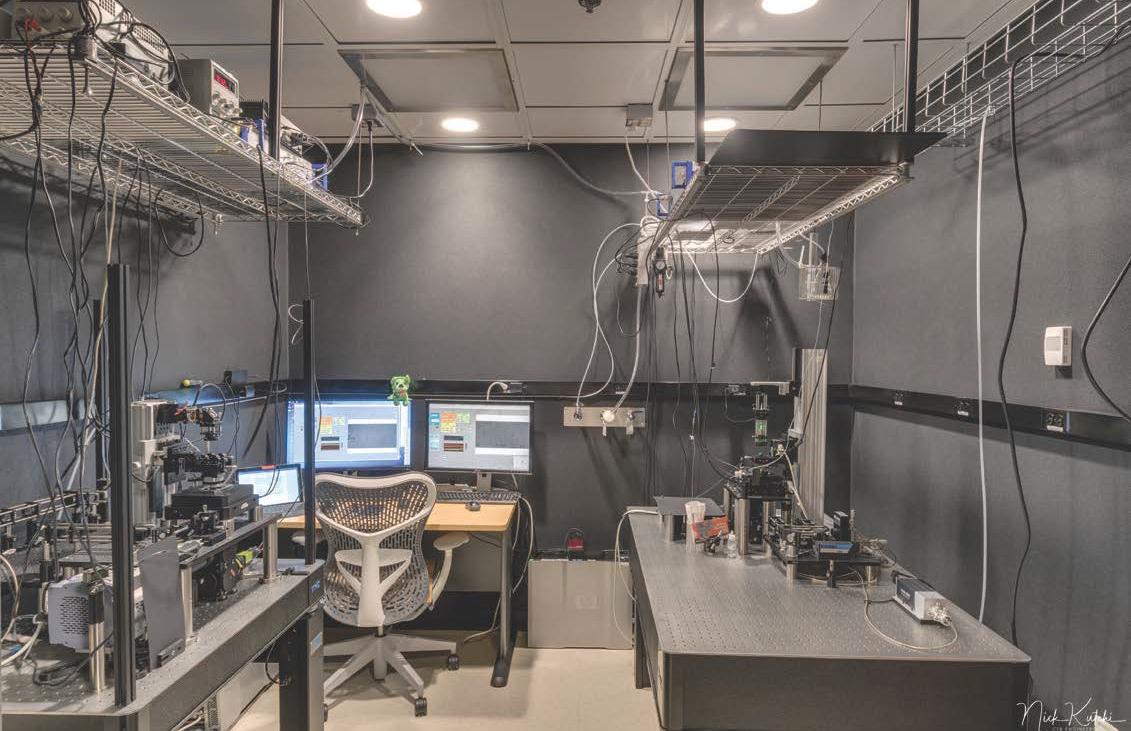PIVOTING WITH PATIENCE
Neuman Lab Looks to Examine Coronavirus Inhibitors

Photo: courtesy keir neuman
Pre-Covid and extreme telework, you could find several members of the team in the ultra-quiet darkness of a custom-designed lab, specially calibrated for light, sound and motion. Scientists who came to biology by way of physics, they might look like they are adding super-tiny Lego pieces to a desk-size 3-D puzzle. In a sense, they are.
“We’re trying to measure the motion of something that’s about 100,000 times less than the width of a human hair,” Neuman said, describing the individual molecules they’re stalking. “That’s what we’re trying to measure directly. So, this is a very precise, very stable kind of work. And it’s all done in real time. This is what’s really beautiful. We watch a single piece of DNA.”
